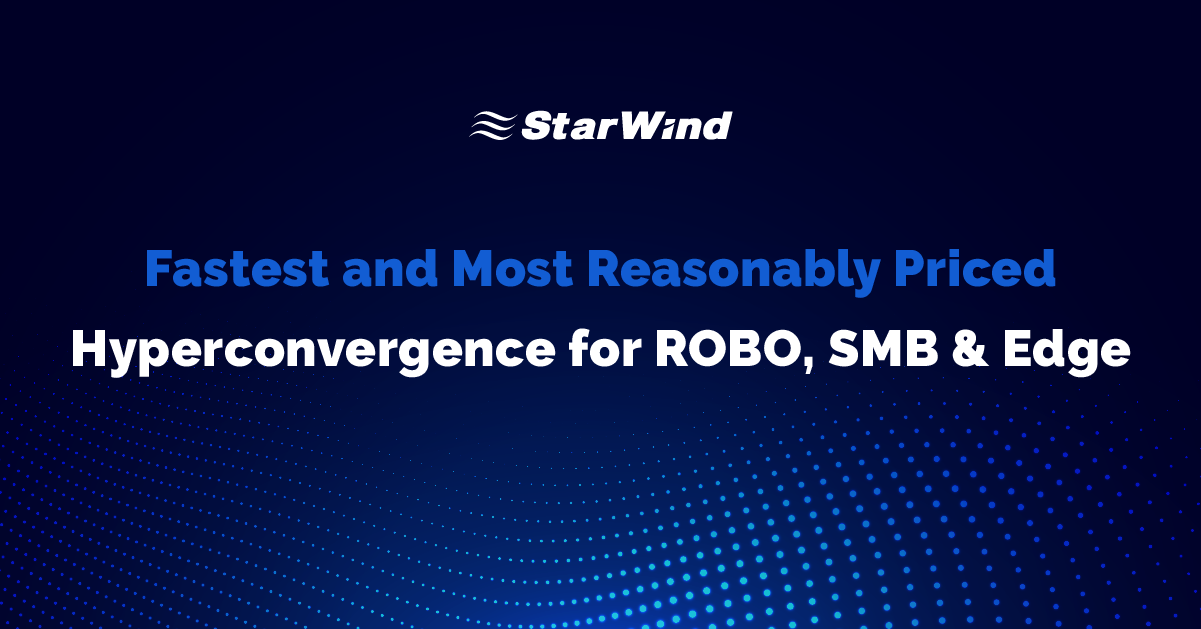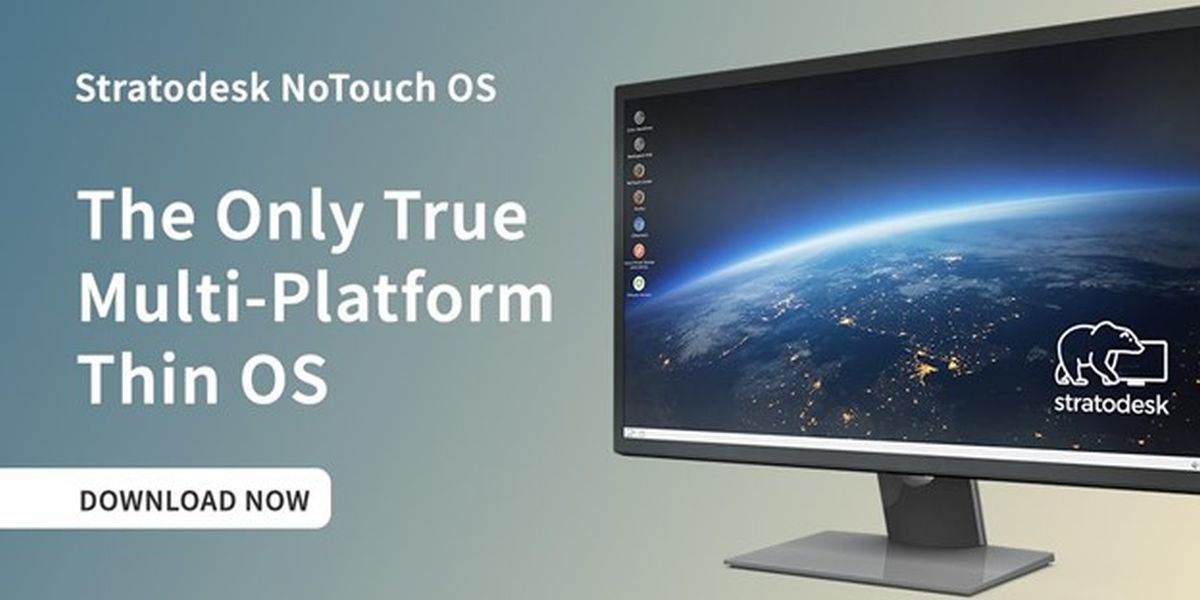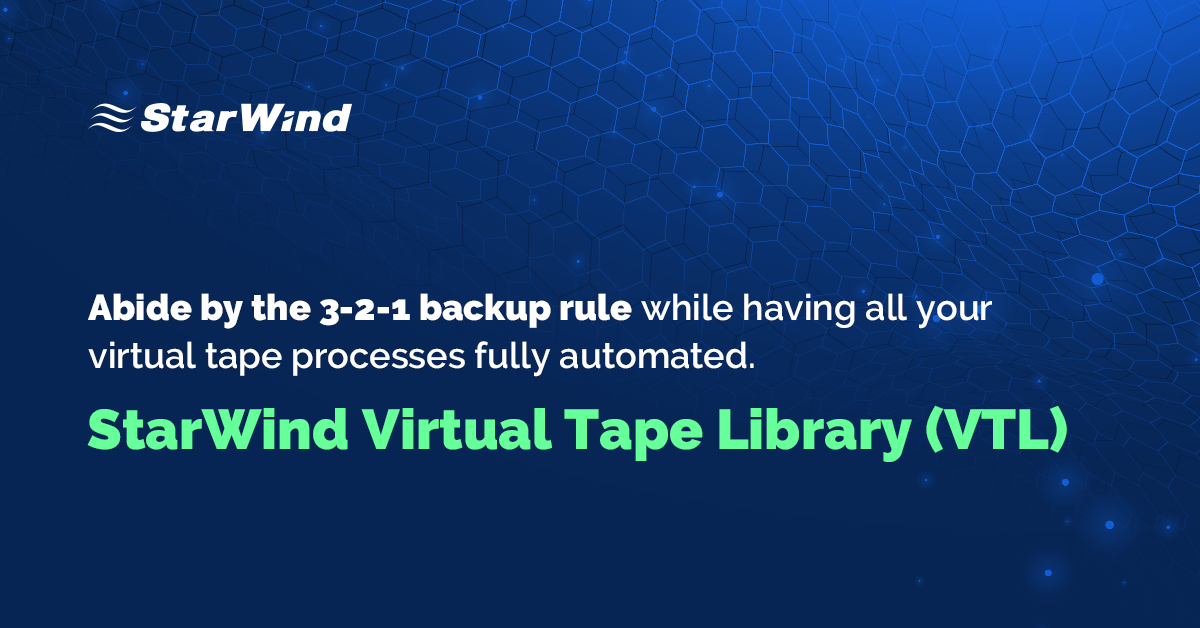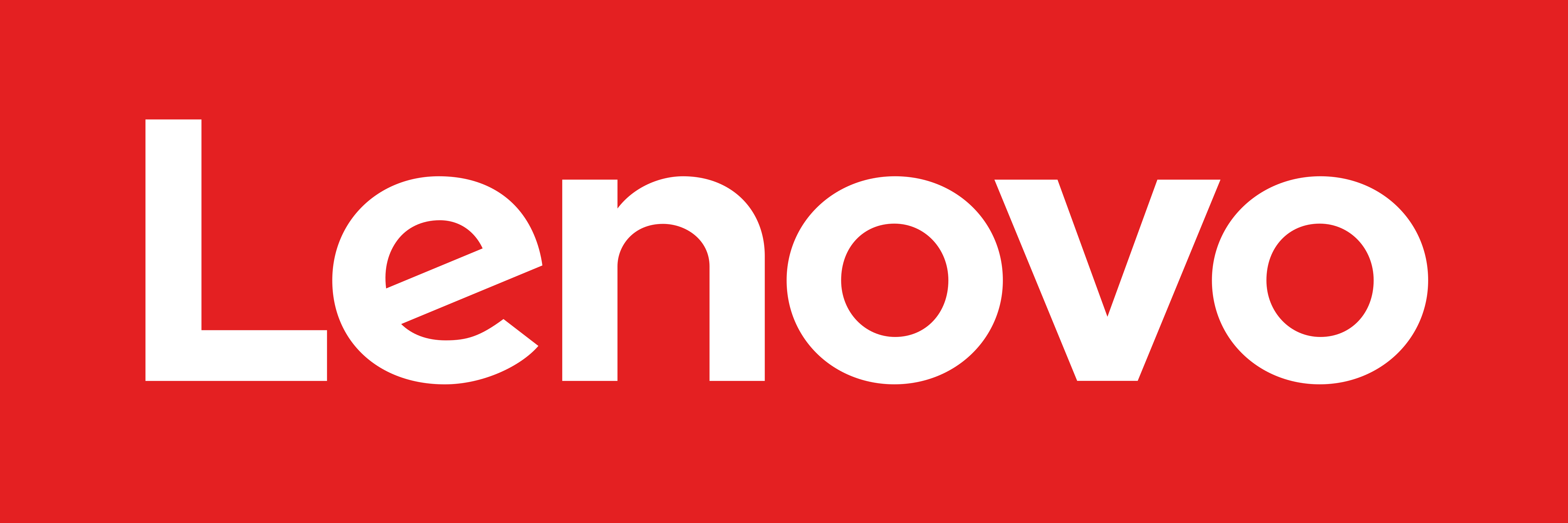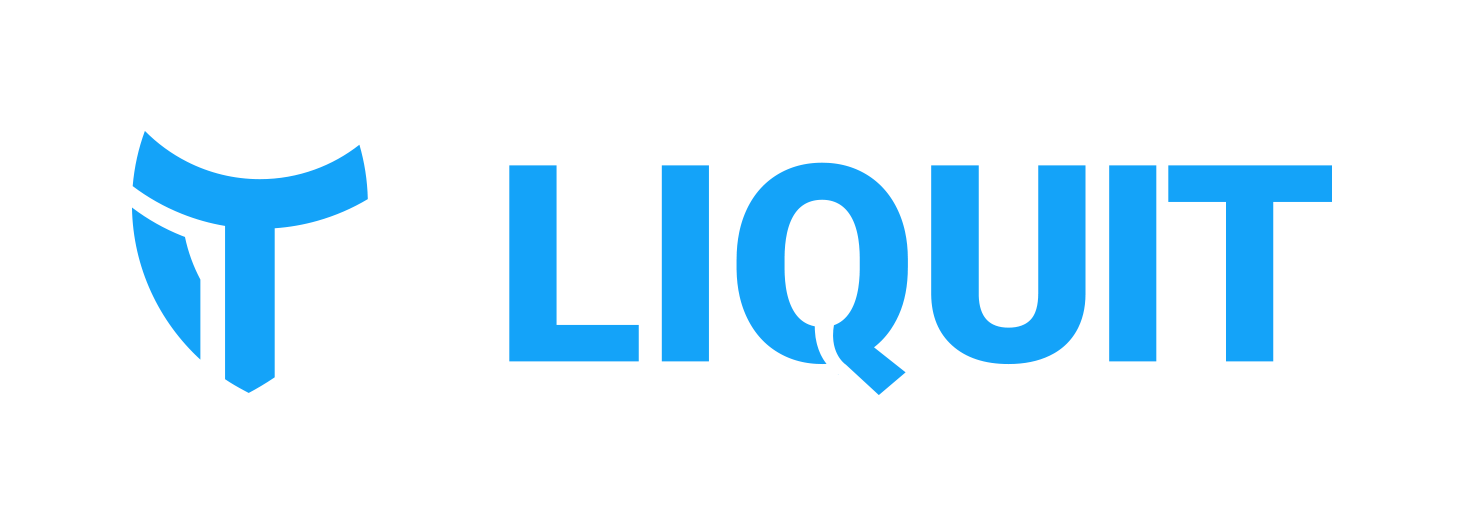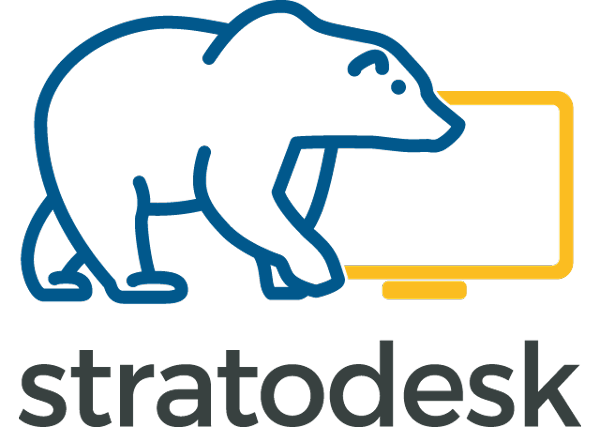VMblog: Before we start, can you provide a little backgrounder information on the company.
Orest Lesyuk: StarWind has started its way as a virtualization pioneer with a software-only product in the form of StarWind Virtual SAN - a software-defined storage (SDS) solution delivering storage high availability. Throughout the years, our portfolio of products expanded with multiple free and paid software products as well as hardware offerings. Our work is primarily centered around hyperconvergence, virtualization and uptime.
As of today, the company has significantly grown, boasting a strong partner-based strategy, worldwide sales and one of the strongest and best-recognized products in the SMB&ROBO space - StarWind VSAN
VMblog: How do you respond to an organization's question of "Do I really need to invest in storage?" in 2021.
Lesyuk: In the modern world, where the amount of data is exponentially increasing and the demand for faster data access is growing inextricably with it: of course, investing in new storage arrays to achieve better performance makes obvious sense. Investing in storage thoughtfully will reduce the time to access data which in turn, will accelerate most of the business processes.
VMblog: If a company has moved things from on-premises to the cloud, what types of storage concerns should they be focused on? What things should they be implementing?
Lesyuk: Even with premium storage in the cloud, you cannot forecast or control the performance you get from it. Also, you have quite limited options to accelerate it, if any. With on-premises storage, you can always change the media type, the controller or the access protocol, which makes it easy to forecast and meet any workload demands.
VMblog: The COVID pandemic changed a lot of things for a lot of people and companies. Can you talk about how this impacted Storage needs?
Lesyuk: The current situation dramatically impacted the day-to-day IT operation of most businesses. The biggest change is that most workloads had to be centralized to the public or private cloud for employees to be able to access them remotely. This increased the required storage capacities. However, what's more important is that uptime and security of data became crucial like never before. While most of the operations are concluded from home, any downtime is completely unacceptable. Remote access also resulted in the number of security risks being significantly increased with employees accessing data from public wifi-hotspots with their phones and using other "unsafe" connections.
VMblog: Now that a significant number of people are working from home, how has this effected how people use storage?
Lesyuk: Storage is just storage. It hasn't changed in any way. While people working from home can use other applications, they are still using the same storage as before. The only thing that has changed is how you access storage.
VMblog: What impact would you specifically like to achieve in the Storage and Integrated Systems space?
Lesyuk: Spread more widely NVMe as a storage medium and NVMe-oF as an access protocol.
VMblog: Where do you see the next bottleneck in storage solutions and what can companies do to prepare for the future?
Lesyuk: Going a few decades back in tie, HDDs were a common media on the storage market. As the amount of data, application types and workload demands where changing and increasing, its speed and access protocol became no longer sufficient. This has been resolved by SSDs. Now we are approaching the same story: SSDs are fast but even they are no longer enough for certain workload types. We are trying to look several steps ahead and develop and bring the NVMe and NVMe-oF technologies to the market beforehand. It's only a matter of time when NVMe will become the new king of storage.
VMblog: What security measures do you have in place for your customers?
Lesyuk: From the encryption perspective, we provide self-encrypting drives (on demand) in StarWind HCA and Encryption-at-rest. From the access security standpoint, we use CHAP permissions and access rights.
VMblog: How is your solution with regard to compliance questions that customers might have? Are you up to date with government and compliance regulations?
Lesyuk: StarWind is compliant with GDPR and Privacy Shield, as well as various industry-specific regulatory requirements. Typically, local government compliance requirements are in line with the requirements of GDPR or inferior in terms of compliance requirements.
VMblog: What methods of encryption does your solution use?
Lesyuk: Self-Encrypting drives (on demand), encryption-at-rest.
VMblog: What's the most important thing happening in your industry right now?
Lesyuk: The "balancing of power" between public and private cloud. With the benefits of the cloud becoming more and more apparent, companies need to create ecosystems where public and private cloud can organically coexist.
VMblog: Which emerging technology do you think holds the most promise once it matures?
Lesyuk: We believe that NVMe as a storage medium alongside NVMe-oF as an access protocol have the most significant potential. It might not seem like that at first sight since the technology is in its early stages of development but that's what we will see powering businesses IT infrastructures in the upcoming years. Additionally, 3DXpoint and P-MEM are the technologies that also have large potential behind them.
VMblog: What's the biggest technological challenge facing the storage industry?
Lesyuk: While NVMe is already here (although still not a mature technology and cannot be considered as an industry standard) giving you the ability to benefit from its speed, you still cannot utilize its full potential when it comes to multiple or full-NVMe storage arrays. In most cases, you don't need that exact speed of all the NVMe drives combined (yet) and server platform leaders are releasing new chassis with more PCIe lanes that can utilize more of the NVMe storage potential. When the platform will stop being a limiting factor, the very next factor will be the protocol to access, pool, and replicate (active-active) the NVMe storage.
VMblog: What are two key capabilities that set you apart from the competition?
Lesyuk: The ability to create a true 2-node cluster with active-active replication without any additional components. Support for StarWind HyperConverged Appliance (HCA). With StarWind HCA, we act as a single support umbrella for all of its components. In addition to this, we cover StarWind HCA with ProActive Support which monitors the system 24/7/365 spotting any abnormal patterns and providing solutions to potential issues before they actually occur. And finally, StarWind assists customers with the migration and integration process related to StarWind HCA. Altogether, this increases system uptime and frees our customers from the need to monitor the system on their own.
VMblog: How are you working with customers to make things simpler as data volumes grow and as they're adjusting to a new world?
Lesyuk: We all strive to provide compact architecture setups that allow our customers to meet the growing data demands while still keeping a low hardware footprint. Additionally, such systems are easy to scale up and scale out without investing in multiple hardware.
VMblog: What does the support experience for cloud storage look like compared to on-prem storage?
Lesyuk: In a public cloud you depend solely on the cloud provider support. If something happens to the cloud provider data center, there is not much you can do about that. Sure, the support and speed with which cloud providers are fixing the issues are on a high level, but from the customer's side, you simply wait for the resolution without the ability to keep a finger on the pulse. With an on-premises environment, support is much easier and flexible since you have a direct line of communication with the vendor as per your specific issue. Sure, everything depends on the issue itself, but there are more ways and options on how to fix them.
VMblog: What is your vision for the future of storage infrastructure?
Lesyuk: We expect the increase of NVMe, P-MEM, Intel Optane usage in both HCI and converged scenarios as main storage media for performance-demanding applications.
VMblog: Is the market ready to embrace software-defined storage in the data center and at the edge? What are the issues driving it? Or what is hindering this evolution?
Lesyuk: Yes, the market is absolutely ready to adopt SDS at the edge and in the datacenter. SDS adds a layer of simplicity and flexibility that enables companies to find the dataflows that work for them. They can efficiently collect, process and transform data at the edge, proceeding to send it to the primary datacenters for further storage and transformation. The most accurate example for data in the modern world would be oil. It's very valuable, but to truly unlock its potential the logistics and the transformation processes have to be perfect.
VMblog: With public cloud vendors offering inexpensive object storage, why should companies consider on-premises object stores?
Lesyuk: Once again, it's all about security and data privacy. Object storage in public cloud is definitely an attractive option in terms of archival storage. However, there is no 100% guarantee that your data remains intact and cannot be accessed by anyone else. It is easier to guarantee and establish data security in the on-premises environment.
VMblog: What are the most common use cases for object storage?
Lesyuk: In our experience, data archival, media storage and filers are those type of cases where object storage is used most frequently. Basically, it is used as a light-workload storage or for rarely accessed data where it wouldn't incur large costs.
VMblog: What current challenges are driving strategic decisions about data storage?
Lesyuk: The key challenges that drive strategic decisions regarding data storage revolve around several key factors. People shouldn't think about the actual storage itself, they should consider which applications would drive their business forward. Then, all the remaining decisions should be based off of that. The biggest challenge is finding the vendor with the right expertise to enable the applications that you are using and make sure that your storage infrastructure does its job. Ideally, it should be "invisible": your applications should perform the tasks they have been designed for. When that happens, you won't really think about the storage infrastructure. It's similar to driving a car: when you are driving a great race car, you are rarely focusing on it's engine while driving.
VMblog: What are your key differentiators?
Lesyuk: Simplicity. Starting from the ability to create a compact 2-node cluster with active-active replication with a minimum hardware footprint and up to StarWind HCA being exceptionally simple and convenient in terms of its integration into the IT infrastructure as it does not require any additional knowledge or experience. Support. We provide a single support umbrella for all of the StarWind HCA components and ProActive Premium Support that monitors the system 24/7/365 allowing us to preventively resolve the issues before having to deal with the consequences.
VMblog: What does the COVID crisis change for your company, business, technology?
Lesyuk: StarWind has managed to transform a lot of our business processes internally, as well as adapt to the challenges that our customers are facing, which not only allowed us not to suffer any drawbacks from COVID-19, but actually allowed us to help out customers transform their datacenters to meet the demands that the pandemic placed in front of them.
VMblog: Where does your solution live in the Storage ecosystem?
Lesyuk: Since StarWind provides HCI platforms, the essential part of the solution is storage. In StarWind HCA, the storage part is controlled by StarWind VSAN, so the answer is that StarWind HCA does not lie within the storage ecosystem, but provides the storage ecosystem itself.
VMblog: What specific problems are being solved by your solutions?
Lesyuk: Business process interruption. Nowadays, most of the companies' business processes depend on the applications and services uptime. In the majority of cases, integrating high availability costs significantly less than downtime.
Complexity and challenges when integrating HCI and high availability in the infrastructure. Being a turnkey solution, StarWind HCA makes the adoption of hyperconvergence and high availability a seamless process. Our customers do not need to spend their valuable time and efforts on finding proper hardware components and software. StarWind HCA just makes everything play ideally together. Instead, the customers receive a complete solution that is just ready to work and does not require any specific skills or knowledge to work with.
VMblog: Can you tell us some of the use cases for HyperConverged Appliances (HCA) and how your company approaches it?
Lesyuk: While we, actually, present mainly StarWind HCI Appliances, our most common use cases are SMB environments, retail, ROBO, maritime, and educational institutions.
VMblog: Can you talk a little bit about the use cases for Virtual SANs (VSAN) vs other storage solutions?
Lesyuk: The use cases for StarWind Virtual SAN (VSAN) are pretty much the same as for StarWind HCA. The main goal behind the VSAN as an SDS stack is to eliminate the dependency on a single point of storage failure and, instead, deliver high availability for the workloads running on top of it. StarWind VSAN actually provides the ability to build a hyperconverged infrastructure.
VMblog: What is the best fit for hyperconverged and converged infrastructures?
Lesyuk: Converged infrastructure is a good fit for environments with high storage capacity requirements and a will of customer to independently grow compute and storage while not looking for higher hardware density and lower power consumption. On the contrary, HCI is a perfect fit for environments with low-to-medium storage capacity requirements, requirements for a low hardware footprint and low power consumption.
VMblog: What is the future for both hyperconverged and converged infrastructures?
Lesyuk: The future for both approaches is pretty much the same. Adopting new storage and networking technologies such as NVMe drives as the main medium and NVMe-oF as the main access protocol. Some of the vendors already start adopting this. The future is not as distant as people think it to come: common protocols and storage architectures are fading away and will be reconsidered in favor of a faster and better future.
